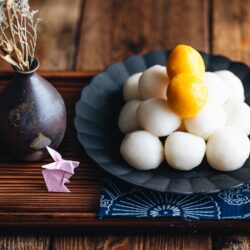
Tsukimi Dango
The Japanese celebrate Mid-Autumn Festival by displaying Tsukimi Dango, white plain rice dumplings in a pyramid arrangement. It‘s very easy to put together so you can celebrate this festival with us!
Ingredients
- 1⅓ cup dangoko (Japanese rice dumpling flour) (plus more, just in case; if you can‘t find dangoko, see the Notes section below for how to substitute)
- ⅔ cup water
- 1 slice kabocha squash (you will need 2 tsp mashed kabocha)
Instructions
- Gather all the ingredients. Kabocha is very hard to cut. If you have trouble, see my tutorial on How to Cut Kabocha Squash. Bring a big pot of water to boil dango on low heat.
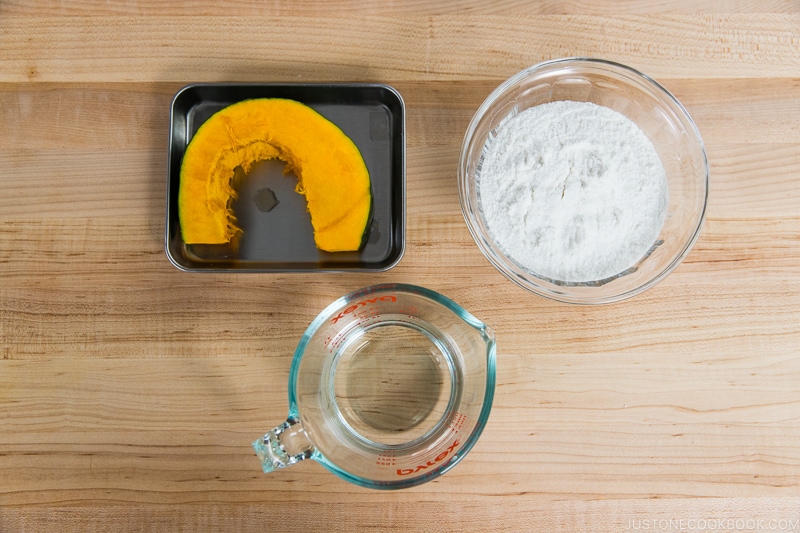
To Prepare Kabocha Squash
- Steam 1 slice kabocha squash for 13–15 minutes (the cooking time varies depending on the thickness).
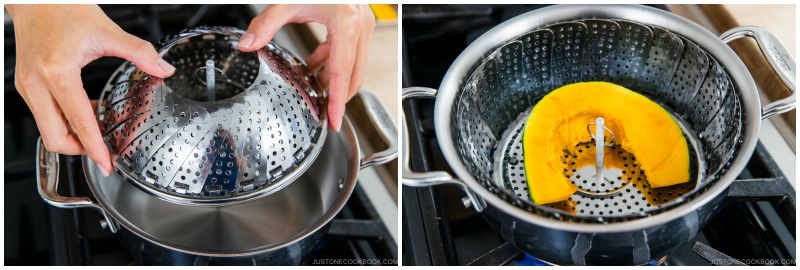
- When a skewer can go through the kabocha, it’s done. Transfer to a plate or tray. With a spoon, scrape off the flesh. You will need 2 tsp mashed kabocha and set aside.
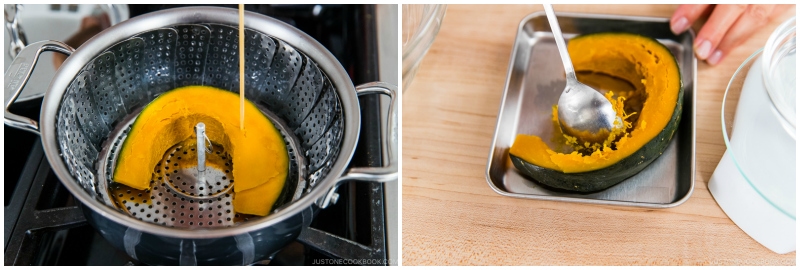
To Make the Dango
- Add 1⅓ cup dangoko (Japanese rice dumpling flour) to a bowl. Stir in ⅔ cup water a little bit at a time while mixing with chopsticks. Please note: It is possible that you may need less or more water depending on your climate. I live in a dry climate, so I may use more water than you. The dangoko will start to stick together and eventually it will clump.
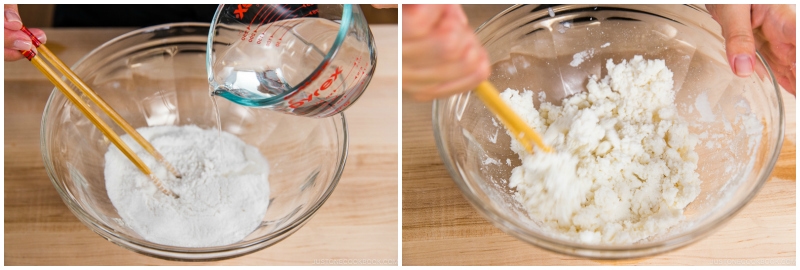
- Using your hand, combine into one ball. Knead until the dough becomes smooth. The texture is like squeezing an “earlobe“ (that’s how we describe the tenderness of this type of mochi in Japanese).
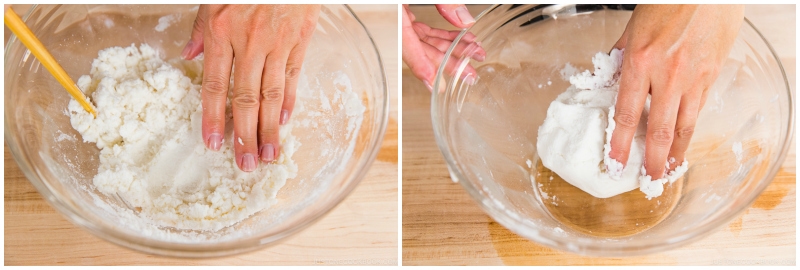
- Make the dough into a ball. Divide the dough into 8 equal pieces. Then, divide each piece into 2 balls. Each ball should be 20 grams. You may have some extra dough, but that’s okay.
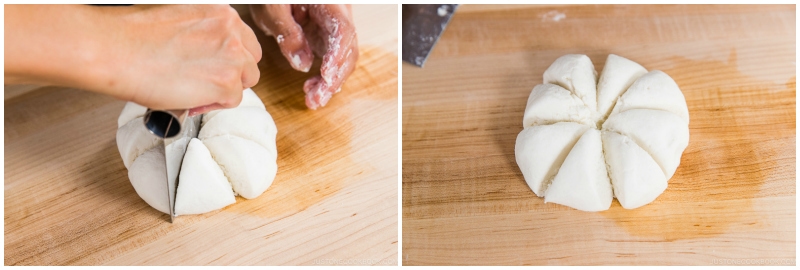
- To make 2 yellow balls, prepare 30 gram of dough and mix in 2 tsp mashed kabocha.
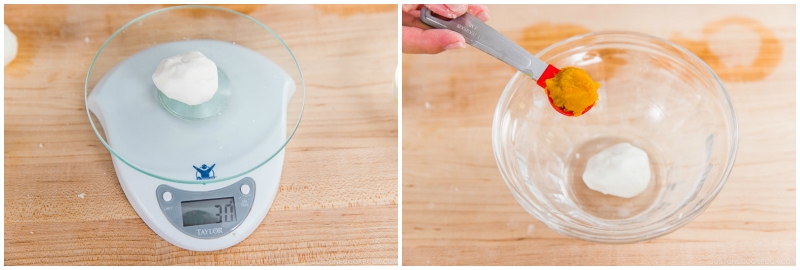
- Combine the kabocha and dough really well. Depending on kabocha, it may contain more moisture. If the dough gets too wet, mix in more dangoko so the dough will be firmer and easy to make into a ball. If the yellow color is not strong, you can add more mashed kabocha, but you also need to add in more flour to firm up. You should have 40 grams of yellow dough.
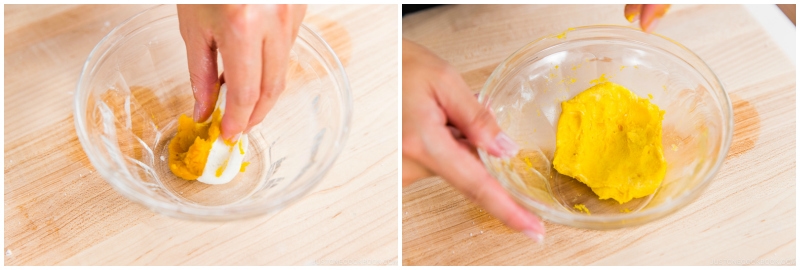
- Divide the 40 grams of yellow dough into 2 pieces weighing 20 grams each, just like the rest of the white balls.
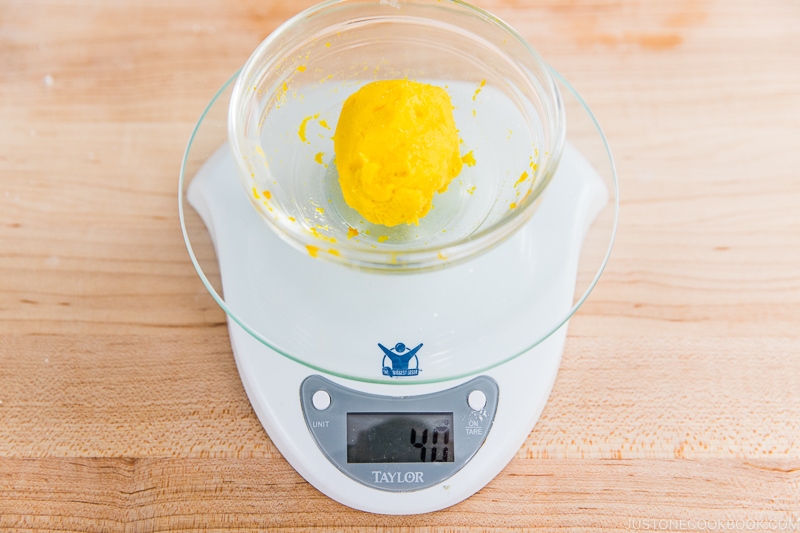
- Shape each piece into a nice, smooth, round ball. If the dough is cracking or has some wrinkles, tap your finger in water and apply a small amount of water on the cracked area to smooth it out. I have 15 white balls and 2 yellow balls.
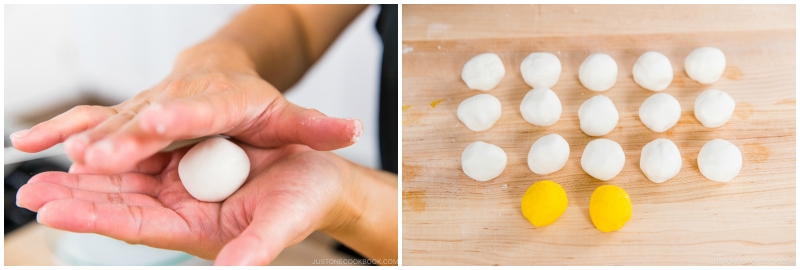
To Cook the Dango
- Once the water in the pot is boiling, gently drop in each white ball into the pot with a continuous motion. We want to cook them all at once, but also keep their round shape. Stir the balls occasionally so they don’t stick to the bottom of the pot.
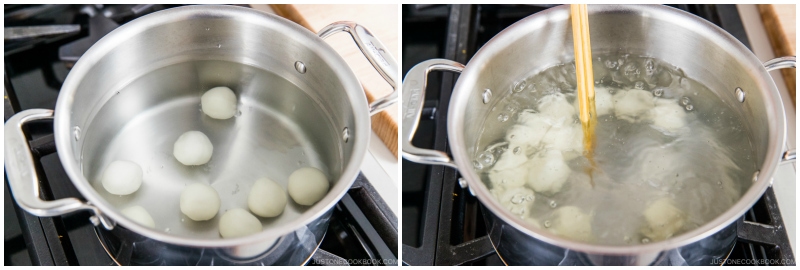
- The dango will sink to the bottom first, but once they are cooked, they will float. Once they rise to the surface, cook them an additional 1–2 minutes. Transfer them into iced water to cool.
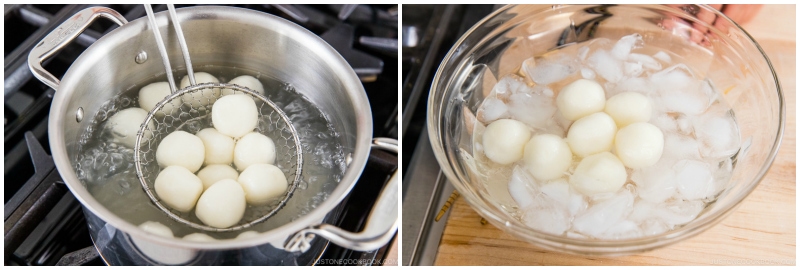
- Once the dango is cooled, drain well and transfer to a tray (if you wet the tray, the dumplings won’t stick).
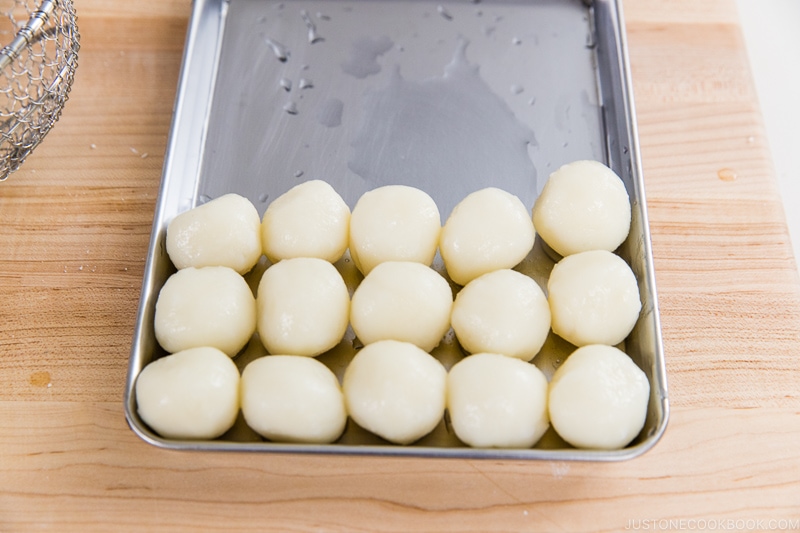
- In the boiling water, add the yellow balls. Once floating, transfer to iced water to let cool. Drain and transfer to the tray.
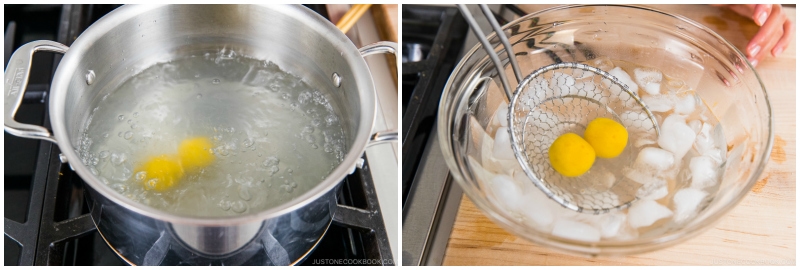
To Arrange the Tsukimi Dango
- Place 15 dango into a pyramid shape on a plate or tray. Set 9 white balls on the bottom level in a 3 x 3 square, then 4 white balls on the middle level, and finally 2 yellow balls on top.
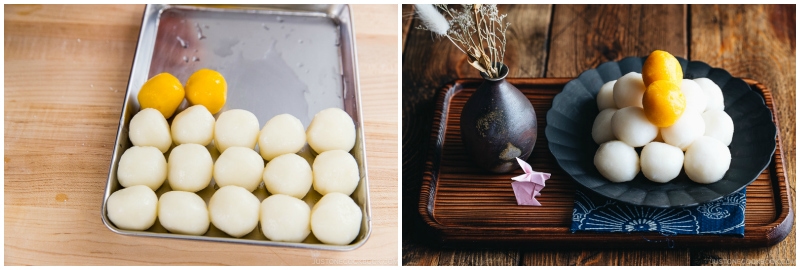
To Eat the Tsukimi Dango
- After displaying the Tsukimi Dango for hours or a day, the dumplings may have become hard to eat. If so, you can cut and toast them in the toaster oven or frying pan. Then, coat the dango with sweet soy glaze (mitarashi sauce) following my Mitarashi Dango recipe.
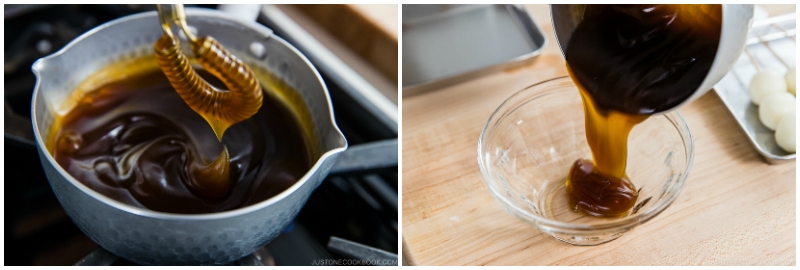
Notes
Dangoko (団子粉): If you can’t find Dangoko, you can make dango with combining Joshinko (上新粉) and Shiratamako (白玉粉) and follow the same instructions above.
- 100 g Joshinko (Japanese rice flour) (3 ½ oz)
- 100 g Shiratamako (glutinous rice flour/sweet rice flour) (3 ½ oz)
- 150-160 ml warm water (roughly ⅔ cup) (Joshinko requires warm water)
Nutrition
Calories: 49kcal, Carbohydrates: 11g, Protein: 1g, Fat: 0.001g, Sodium: 0.5mg, Potassium: 1mg, Fiber: 0.005g, Sugar: 11g, Vitamin A: 4IU, Vitamin C: 0.04mg, Calcium: 0.4mg, Iron: 0.1mg